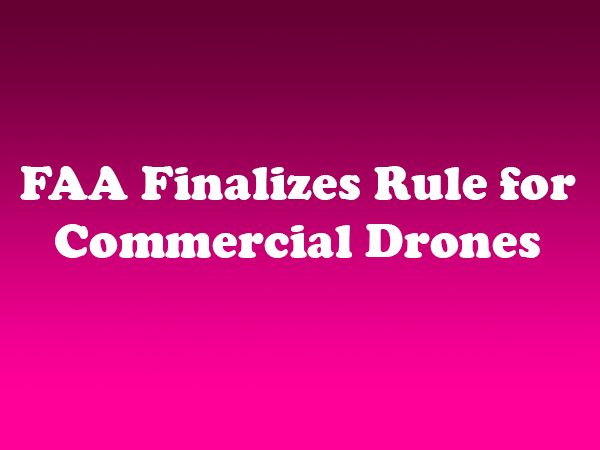FAA Finalizes Rule for Commercial Drones
Photographers seeking to use drones for commercial purposes, such as aerial real estate photography, finally have the green light. The Federal Aviation Administration (FAA) recently finalized its rule for routine commercial use of small unmanned aircraft systems (UAS). It will take effect on August 29, 2016.

The regulations — Part 107 of the Federal Aviation Regulations — apply to unmanned aircraft drones weighing less than 55 pounds that are conducting non-hobbyist operations. Prior to the new rule, it was illegal to fly commercial drones without a special certificate or exemption.
Drone Operation Requirements
The FAA’s rule is largely intended to protect the safety of other aircraft as well as people and property on the ground. Operators must keep the drone in sight. If using a First Person View or similar technology, a designated “visual observer” must always keep the drone within unaided sight, i.e. no binoculars.
Commercial UAS can fly during daylight or in twilight (30 minutes before official sunrise to 30 minutes after official sunset, local time) so long as they are equipped with appropriate anti-collision lighting. Drones may fly up to 400 feet above the ground, and higher the UAS remain within 400 feet of a structure. The maximum allowed speed is 100 mph (87 knots).
To protect those on the ground, operators can’t fly a small UAS over anyone who is not directly participating in the operation. The rule also prohibits operating a drone from a moving vehicle unless you are flying over a sparsely populated area.
Drone Operator Certification
Commercial drone operators be at least 16 years old and must complete a certification process that is akin to going through driver’s ed. In order to obtain a remote pilot airman certificate with a small UAS rating, operators must pass an initial aeronautical knowledge test at an FAA-approved knowledge testing center. Those who already have a Part 61 pilot certificate must have completed a flight review in the previous 24 months and must take an online training course provided by the FAA. The Transportation Security Administration will conduct a security background check of all remote pilot applications prior to issuing the certificate.
Notably, the FAA’s final rule does not address privacy concerns. According to the agency, it is acting to address privacy considerations. The regulations also do not contain a federal preemption provision, which leaves room for states and local governments to craft their own rules. For photographers seeking to remain on the right side of the law, it is imperative to stay on top of any new legal developments.

